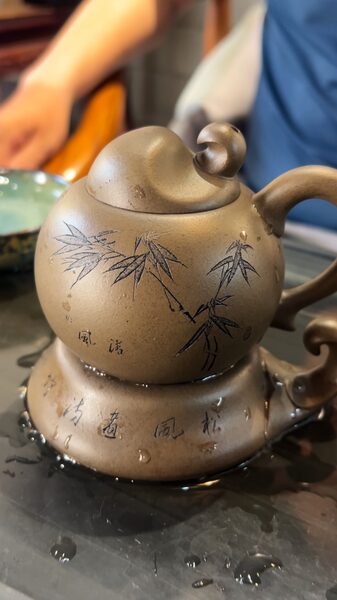At first glance, the teapot before you seems to defy tradition—there is no visible spout from which the fragrant brew might pour. Yet, this spoutless wonder holds a secret that has captured the curiosity of many: a clever design that blends simplicity with physics to deliver a truly magical pouring experience.
The ingenuity lies in its construction. Instead of a protruding spout, the teapot features a tiny hole at the top and a concealed spout at its base. When the hole is covered with a finger, the tea remains perfectly still inside the vessel. Lift your finger, and watch as the tea flows gracefully into your cup from the hidden base. It’s a seamless interaction between design and the laws of physics, turning the simple act of pouring tea into a delightful spectacle.
This design not only reimagines the traditional teapot but also invites everyone to ponder the fascinating principles at play. How does the tea remain inside when the hole is sealed? What causes it to flow when the seal is broken? The answers lie in the realm of atmospheric pressure and fluid dynamics, offering a real-world demonstration of scientific concepts in the most unexpected of household items.
Such innovative creations reflect a broader trend of blending art with science, tradition with modernity—a hallmark of Asia’s dynamic cultural landscape. For business professionals, investors, and designers, this teapot symbolizes the potential of thoughtful design to disrupt markets and captivate consumers. For academics and researchers, it poses intriguing questions worthy of exploration. And for global readers and cultural enthusiasts, it offers a glimpse into the ever-evolving world of functional art.
So, the challenge stands: who can unravel the physics behind this magical pour? Perhaps it’s an invitation not just to enjoy a cup of tea, but to engage with the science that makes such everyday wonders possible.
Reference(s):
cgtn.com








